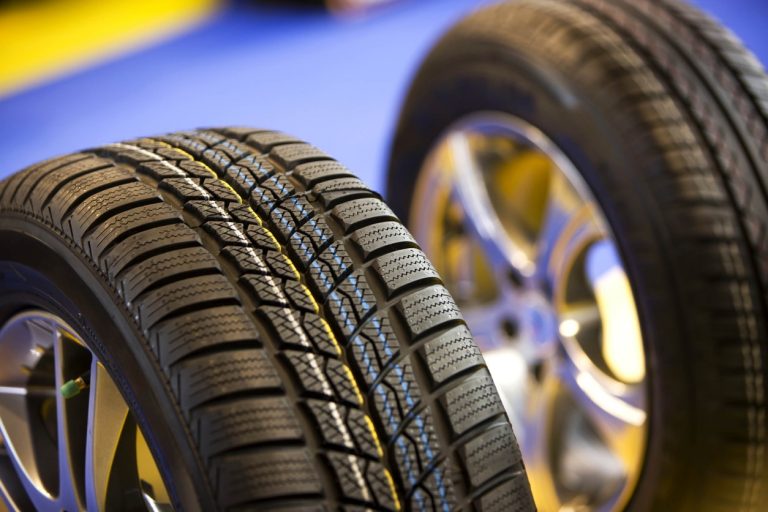Maintaining your vehicle’s tires is crucial for safety and performance. Ignoring signs of tire wear can lead to dangerous driving conditions. Here are the top 10 obvious signs you need new tires.
1. Visible Tread Wear
The most obvious sign that you need new tires is visible tread wear. The tread on your tires is what provides grip on the road. When the tread wears down, your tires lose traction, especially in wet conditions. Checking the tread depth regularly is essential. You can use a penny or a tread depth gauge for this. If the tread is below 2/32 of an inch, it’s time to replace your tires.
Tread wear indicators are built into most tires and will appear as bands running perpendicular to the tread. If these indicators are flush with the tread, your tires need to be replaced. Ignoring worn tread can lead to reduced handling, increased stopping distances, and a higher risk of hydroplaning in wet conditions.
If you want to save some money, you can buy used winter tires.
2. Cracks and Cuts in the Sidewall
Inspect for cracks or cuts in the sidewall. These can develop over time due to exposure to the elements and rough road conditions. Sidewall damage is serious because it can lead to tire blowouts. If you notice significant cracking or deep cuts, they are at risk of failing while driving. Replacing them is essential to avoid a potential accident.
Sidewall damage can also be caused by hitting curbs or potholes. Even if the cracks seem small, they can grow over time and compromise the structural integrity of the tire. Regularly checking for sidewall damage can prevent unexpected tire failures.
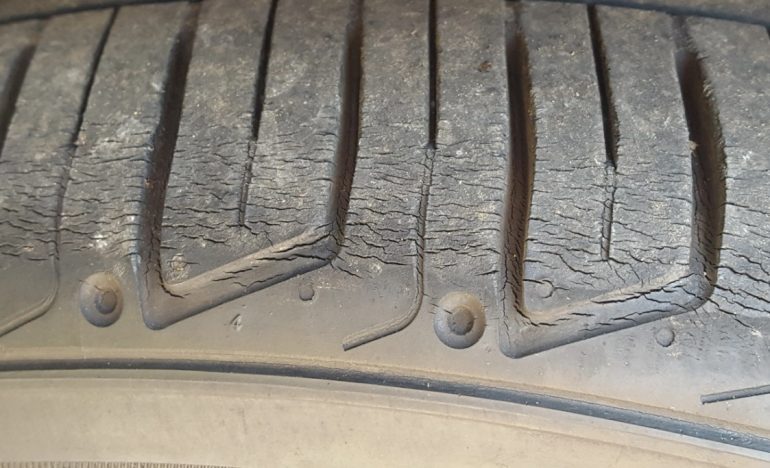
3. Uneven Tread Wear
Uneven tread wear is a sign of alignment or suspension issues. If your tires wear more on one side than the other, it indicates that your vehicle’s alignment is off. This can cause your car to pull to one side while driving, making it harder to control. Uneven wear also shortens the lifespan.
Rotating regularly can help promote even tread wear. However, if you notice significant uneven wear, it’s essential to get your alignment checked and fix any underlying issues. This not only extends life but also improves your vehicle’s handling and safety.
4. Bulges and Blisters
Bulges and blisters are a signs of internal damage. They occur when the outer surface of the tire weakens and allows air pressure to create a bulge. This is a dangerous condition that can lead to a sudden blowout. If you notice any bulges or blisters, replace the tire immediately.
Bulges and blisters often occur after hitting a pothole or curb. They indicate that the internal structure of the tire has been compromised, and continuing to drive on a damaged tire is risky. Regularly inspect for these abnormalities to ensure safe driving conditions.
5. Excessive Vibration
Experiencing excessive vibration while driving can indicate tire issues. While some vibration is normal, excessive vibration can mean that your tires are unbalanced or misaligned. It can also indicate internal tire damage or uneven tread wear.
If you feel unusual vibrations, especially at higher speeds, it’s essential to have your tires and alignment checked. Ignoring these vibrations can lead to further damage to your tires and suspension system. Addressing the issue promptly ensures a smoother and safer driving experience.
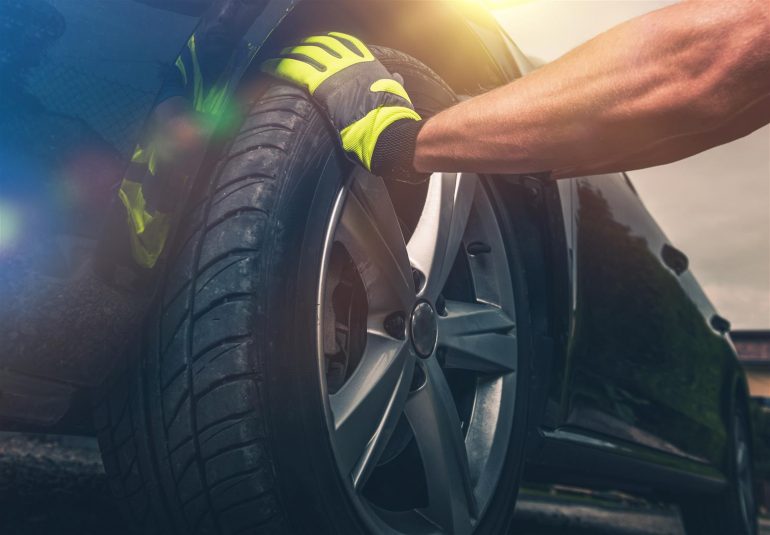
6. Poor Handling
If you notice that your vehicle doesn’t handle as well as it used to, it could be due to worn tires. Poor handling can manifest as difficulty steering, reduced traction, or a feeling that the car is not responding properly to your inputs.
Worn tires can significantly impact your vehicle’s handling, especially in adverse weather conditions. Ensuring they have adequate tread and are properly inflated can improve handling and safety. Regularly checking your tires and replacing them when necessary helps maintain optimal vehicle performance.
7. Low Tire Pressure
Consistently low tire pressure is a sign that you may need new tires. They naturally lose air over time, but if you find yourself constantly refilling your tires, it could indicate a slow leak or damaged tire.
Driving on underinflated ones can cause excessive heat buildup, leading to a blowout. It also reduces fuel efficiency and increases tread wear. Checking your tire pressure regularly and addressing any issues promptly can prevent further damage and ensure safe driving conditions.
8. Tire Age
Even if they appear to be in good condition, their age can make them unsafe. Most tire manufacturers recommend replacing tires every six to ten years, regardless of tread wear. The rubber in tires degrades over time, leading to reduced performance and increased risk of failure.
Checking the date of manufacture on your tires can help you determine their age. This information is typically found on the sidewall, represented by a four-digit number indicating the week and year of production. Replacing old tires ensures that you’re driving on safe and reliable rubber.
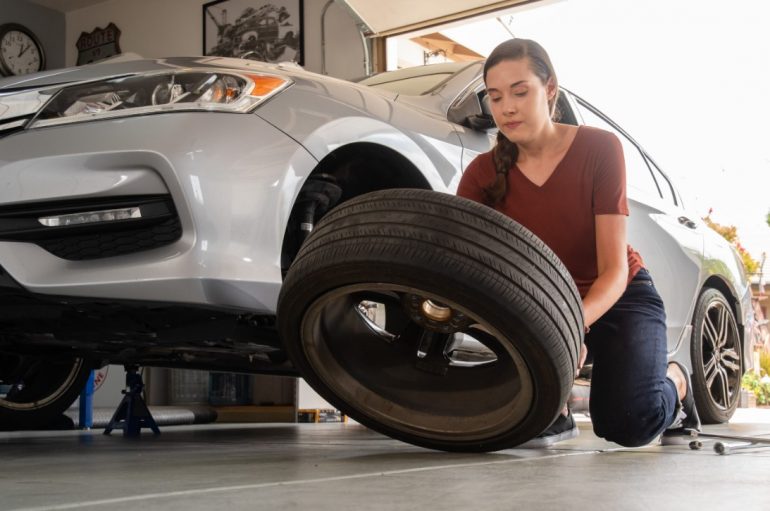
9. Frequent Loss of Traction
If you frequently lose traction, especially in wet or slippery conditions, it’s a sign that your tires are no longer providing adequate grip. This can make your vehicle more prone to skidding and hydroplaning, increasing the risk of accidents.
Tires with worn treads cannot effectively channel water away from the contact patch, leading to reduced traction. Ensuring that your tires have sufficient tread depth and are in good condition is crucial for maintaining proper grip and control, particularly in adverse weather conditions.
10. Excessive Noise
Excessive noise can indicate a variety of issues, including uneven tread wear, alignment problems, or damaged tires. While some tire noise is normal, a sudden increase in noise levels should be investigated.
Noisy ones can be a sign that they are wearing unevenly or that there is an underlying issue with your suspension or alignment. Addressing these issues promptly can extend the life of your tires and improve your overall driving experience. Regular maintenance and inspections help keep your tires in optimal condition and reduce noise.
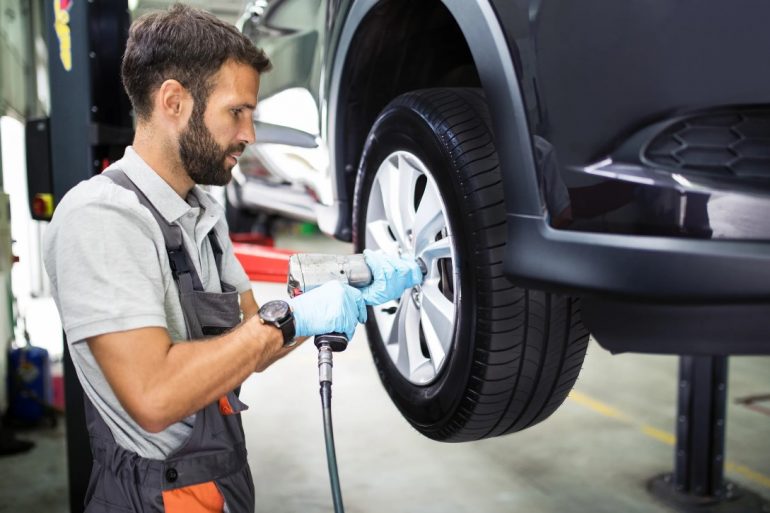
Conclusion
Recognizing the signs that you need new ones is essential for maintaining vehicle safety and performance. Regular inspections and maintenance can help you identify issues before they become serious problems.
Visible tread wear, cracks, cuts, uneven wear, bulges, excessive vibration, poor handling, low tire pressure, tire age, frequent loss of traction, and excessive noise are all indicators that it’s time to replace your tires.

